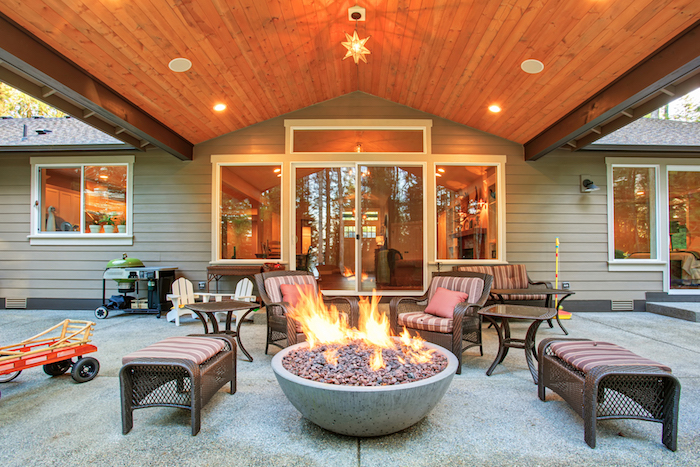How to Pick the Perfect Fire Pit this Summer

Summer days are long. You might spend them wrangling kids, braving summer traffic and shopping in crowded downtowns. You might catch an hour or two at the beach then enjoy a delicious dinner. No matter what, you’ll want to kick back and relax with a refreshing glass of rosé or a nice pale ale. Of course, you’ll want to stay outside to take in the fresh air. If it’s a crisp, cool night on the East End what you’ll need is a relaxing, crackling fire. More importantly, you need someplace to put it. Outdoor fire pits are certainly nothing new, but if you don’t already have one, you should certainly remedy that, and quick. But what to look for and how to choose? Not to worry, we have you covered.
First, size matters, which is to say, you want to think about the size of the fire pit you want and/or need. There are the small portable types, about 20” to 25”, which are good if you’ll be transporting it to and from locations and are perfect for weekend camping trips. Mid-size fire pits are the most common types given their convenience and cost. This size, generally about 30” wide, holds a decent amount of wood for a good-sized fire while not sacrificing maneuverability. Many small and mid-sized fire pits are simply bowls atop a stand, which allows for the easy removal of ashes—summer fires should be relaxing after all, not a hassle. Larger pits, which can hold more wood, make larger fires and are therefore much more fun, they are, however, generally immovable. Larger pits also allow for a variety of possibilities from big but simple to multi-level, multifunctional units that combine fire pit with anything from a dinner table to a beverage cooler. If you’re not going anywhere for a while, a larger fire pit may be your best choice.
What about the material of your fire pit? As long as it’s not flammable, you can choose virtually anything you want. If you’re buying a steel pit, remember that steel rusts, so you’ll want yours to be treated. Tile and stone give a classy, sophisticated look, but boy are they heavy—you won’t be moving them around too much, so they may be best for stationary fire pits. Copper is probably your best bet: it won’t rust, ages well (you’ll get that desirable patina over time) and will last you a long time. Cast iron is a popular choice perhaps because it’s inexpensive and lightweight, meaning you’re free to move it around the yard. And, of course, there’s stainless steel. These fire pits will be on the expensive side, along with copper fire pits, as both are rust proof and quite durable.
Whichever kind of fire pit you decide on, be careful when using it. Never put a live fire too close to your house—cedar shakes are quite flammable and a small fire can get out of control very quickly. Never use a fire pit on a covered porch or under low–hanging branches. If possible, use your fire pit on stone, cement, or tile, all of which are fireproof. You’ll also want to consider local town codes and regulations, of which there are many.
Once you’ve purchased and set up your favorite fire pit, create some ambience. Consider outdoor lighting and seating, citronella candles to keep mosquitos away and other mood–setting decorations.
And as always, whenever you’re outside, check for ticks—we’ll have a lot of them this year and, yes, you can pick them at night.



